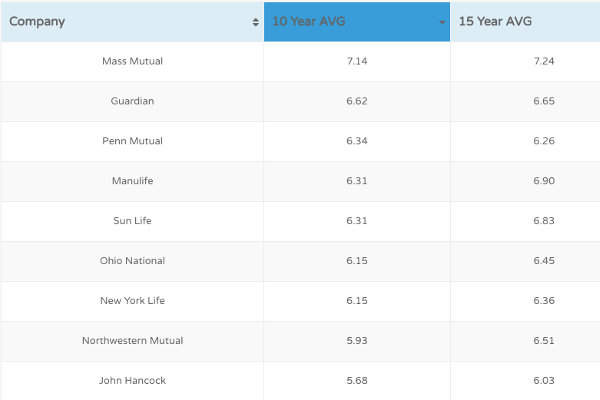When it comes to life insurance, there are two main types that individuals can choose from: whole life insurance and term life insurance. Both options provide valuable protection for your loved ones in the event of your passing, but they differ significantly in terms of coverage, duration, and cost. In this article, we will explore the key differences between whole life insurance and term life insurance, with a particular focus on the whole life insurance cash value.
Coverage Duration: Whole life insurance provides coverage for your entire life, while term life insurance offers coverage for a specific term. This means that with whole life insurance, your beneficiaries are guaranteed a death benefit regardless of when you pass away, whereas with term life insurance, the death benefit is only paid if you pass away during the term of the policy.
Cash Value Accumulation: Whole life insurance policies accumulate cash value over time, which can be accessed by the policyholder during their lifetime. Term life insurance, on the other hand, does not have a cash value component.
Premiums: Whole life insurance premiums are generally higher than term life insurance premiums. This is because whole life insurance provides lifetime coverage and accumulates cash value, whereas term life insurance only provides coverage for a specific term and does not accumulate cash value.
Flexibility: Term life insurance offers more flexibility in terms of coverage amount and duration. Policyholders can choose the coverage amount and term length that best suit their needs. Whole life insurance, on the other hand, has fixed premiums and coverage for life.
Secure your future today. Choose the right life insurance. Click below to get a Quote Now!
Get Me A Quote
Growth of Cash Value: The cash value in a whole life insurance policy grows over time. It is funded by a portion of the premium payments and earns interest or dividends, depending on the policy and the insurance company. The growth is typically tax-deferred, meaning you won't have to pay taxes on the growth until you withdraw it.
Accessing Cash Value: Policyholders have the option to access the cash value of their whole life insurance policy during their lifetime. This can be done through withdrawals, policy loans, or even surrendering the policy. It's important to note that accessing the cash value may affect the death benefit and could have tax implications, so it's crucial to consult with a financial advisor or insurance professional before making any decisions.
Supplementing Retirement Income: The cash value in a whole life insurance policy can be used to supplement retirement income. By withdrawing or taking loans against the cash value, policyholders can have an additional source of funds during their retirement years. This can be particularly beneficial for individuals who want to diversify their retirement income sources.
Emergency Fund or Financial Safety Net: The cash value in a whole life insurance policy can also serve as an emergency fund or financial safety net. In times of unexpected expenses or financial hardships, policyholders can tap into the cash value to cover these costs. Having this accessible cash reserve can provide peace of mind and financial stability. Legacy Planning: Whole life insurance cash value can be used as part of a comprehensive legacy planning strategy. Policyholders can designate beneficiaries to receive the death benefit and potentially use the cash value to leave a financial legacy for their loved ones. This can include funding education expenses, paying off debts, or providing an inheritance.
When considering life insurance options, it's important to assess your individual needs, financial goals, and budget. Consulting with a knowledgeable insurance professional can help you make an informed decision and choose the policy that best suits your circumstances.
Get Me A Quote
What is Whole Life Insurance?
Whole life insurance is a type of permanent life insurance that provides coverage for the entire duration of your life. As long as you continue to pay your premiums, your policy will remain in force until your death. One of the key features of whole life insurance is the accumulation of cash value over time.Understanding Cash Value
Cash value is a unique feature of whole life insurance policies. It is a savings component that grows over time and can be accessed by the policyholder during their lifetime. The cash value grows tax-deferred, meaning you won't have to pay taxes on the growth until you withdraw it. This makes whole life insurance an attractive option for individuals who want both protection and a savings component.What is Term Life Insurance?
Term life insurance, on the other hand, is a type of life insurance that provides coverage for a specific term or period. Unlike whole life insurance, term life insurance does not accumulate cash value and is typically more affordable.Understanding the Differences
Now that we have explored the key features of both whole life insurance and term life insurance, let's delve deeper into the differences between the two:Coverage Duration: Whole life insurance provides coverage for your entire life, while term life insurance offers coverage for a specific term. This means that with whole life insurance, your beneficiaries are guaranteed a death benefit regardless of when you pass away, whereas with term life insurance, the death benefit is only paid if you pass away during the term of the policy.
Cash Value Accumulation: Whole life insurance policies accumulate cash value over time, which can be accessed by the policyholder during their lifetime. Term life insurance, on the other hand, does not have a cash value component.
Premiums: Whole life insurance premiums are generally higher than term life insurance premiums. This is because whole life insurance provides lifetime coverage and accumulates cash value, whereas term life insurance only provides coverage for a specific term and does not accumulate cash value.
Flexibility: Term life insurance offers more flexibility in terms of coverage amount and duration. Policyholders can choose the coverage amount and term length that best suit their needs. Whole life insurance, on the other hand, has fixed premiums and coverage for life.
Secure your future today. Choose the right life insurance. Click below to get a Quote Now!
Get Me A Quote
Whole Life Insurance Cash Value
The cash value component of a whole life insurance policy can provide policyholders with financial flexibility and options. Here are some key points-Growth of Cash Value: The cash value in a whole life insurance policy grows over time. It is funded by a portion of the premium payments and earns interest or dividends, depending on the policy and the insurance company. The growth is typically tax-deferred, meaning you won't have to pay taxes on the growth until you withdraw it.
Accessing Cash Value: Policyholders have the option to access the cash value of their whole life insurance policy during their lifetime. This can be done through withdrawals, policy loans, or even surrendering the policy. It's important to note that accessing the cash value may affect the death benefit and could have tax implications, so it's crucial to consult with a financial advisor or insurance professional before making any decisions.
Supplementing Retirement Income: The cash value in a whole life insurance policy can be used to supplement retirement income. By withdrawing or taking loans against the cash value, policyholders can have an additional source of funds during their retirement years. This can be particularly beneficial for individuals who want to diversify their retirement income sources.
Emergency Fund or Financial Safety Net: The cash value in a whole life insurance policy can also serve as an emergency fund or financial safety net. In times of unexpected expenses or financial hardships, policyholders can tap into the cash value to cover these costs. Having this accessible cash reserve can provide peace of mind and financial stability. Legacy Planning: Whole life insurance cash value can be used as part of a comprehensive legacy planning strategy. Policyholders can designate beneficiaries to receive the death benefit and potentially use the cash value to leave a financial legacy for their loved ones. This can include funding education expenses, paying off debts, or providing an inheritance.
Conclusion
In conclusion, whole life insurance and term life insurance are two distinct types of life insurance policies that offer different benefits and features. Whole life insurance provides lifetime coverage, accumulates cash value, and offers financial flexibility. Term life insurance, on the other hand, provides coverage for a specific term and does not have a cash value component.When considering life insurance options, it's important to assess your individual needs, financial goals, and budget. Consulting with a knowledgeable insurance professional can help you make an informed decision and choose the policy that best suits your circumstances.
Secure your future today. Choose the right life insurance.
Click below to get a Quote Now!
Get Me A Quote




